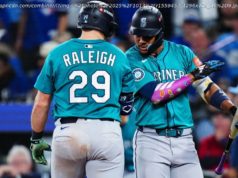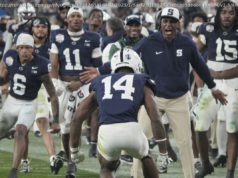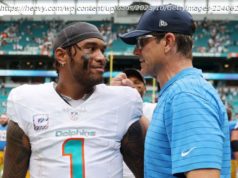Home-field advantage in the World Series is no longer at stake. Can the Midsummer Classic still remain relevant without Bud Selig’s idea?
Bud Selig absorbed a lot of flak over the years for attaching home-field advantage in the World Series to the outcome of the All-Star Game. Columnists (like me) didn’ t like it, players didn’ t like it, executives didn’ t like it and when the latest round of labor talks played out, the union asked for the elimination of the feature — and MLB acceded.
But now that it’s gone, there is no getting around this reality: the All-Star Game — which had already lost a lot of its competitive soul over the past three decades as managers have focused on high-volume participation over winning — feels a little more hollow now that It Doesn’ t Count.
Baseball’s All-Star Game has the potential to be the best among the major professional sports, given how the concern over possible injury turns the NFL’s offensive and defensive linemen into dance partners, and because nobody even pretends that defense or ball movement matter in the NBA’s game. If MLB players approached their All-Star Game like the NBA and NFL players do, pitchers would lob batting practice fastballs over the heart of the plate and let hitters tee off.
But the head-to-head, mano a mano aspect of baseball — the pitcher versus the batter — creates a competitive dynamic that the other sports don’ t necessarily have, except in those occasional moments when LeBron James squares up against Kevin Durant or a great wide receiver is contending with a shutdown cornerback for a pass.
This part of baseball is squandered, however, by the revolving door of changes during the game. Aaron Judge is a hitter whom fans want to see right now, and we know this because less than a year since he made his major league debut he led all American League players in the All-Star voting. If he is removed from the All-Star Game after two plate appearances, it’s like pulling actor Nikolaj Coster-Waldau from «Game of Thrones» 15 minutes into the show, or calling Bruno Mars or Ed Sheeran off the stage of a concert after the first couple of songs.
There are no major basketball events going on right now; no hockey; the NFL’s training camps don’ t open until later this month. So leave Aaron Judge in the game. Keep the best and most popular players on the field to increase the likelihood that they will create indelible memories. Leave Mike Trout in the game in the years he’s healthy. Leave Bryce Harper, the National League’s leading vote-getter, in the game. Ask Chris Sale and Max Scherzer, the Cy Young front-runners, how they feel about pitching three innings apiece. Please, instruct the AL and NL managers to try to win the game rather than focusing on getting the second-tier All-Stars the one plate appearance or one-third of an inning that fans won’ t remember.
The greatest All-Star moments were created by the best players. Ted Williams won the 1941 All-Star Game with a three-run homer in the bottom of the ninth inning of a game he started, and finished, happily clapping his way around the bases. Carl Hubbell, later inducted into the Hall of Fame, started the 1934 All-Star Game, and because he was allowed to pitch a second inning, he struck out Al Simmons and Joe Cronin, after whiffing Babe Ruth, Lou Gehrig and Jimmie Foxx in the first inning — five consecutive strikeouts. Hubbell pitched the third inning, as well.
The 1967 All-Star Game lasted 15 innings, and here is the list of stars who played all of it: Roberto Clemente, Hank Aaron, Orlando Cepeda, Brooks Robinson, Tony Oliva, Harmon Killebrew, Tony Conigliaro, Carl Yastrzemski and Bill Freehan. The biggest stars started, and many of the biggest stars finished. It makes sense in every other field of entertainment, so why doesn’ t it happen in baseball’s All-Star Game?
If there is a change back to restoring star power in the All-Star Game, it’s hard to imagine it happening anytime soon. The union possesses a degree of veto power and may not be interested in adopting a shift back to a more superstar-centric format. The World Baseball Classic semifinals and finals may ultimately be used to bolster the midseason platform events.
But the home-field advantage may be an All-Star Game hook we miss sooner than anybody realized.






